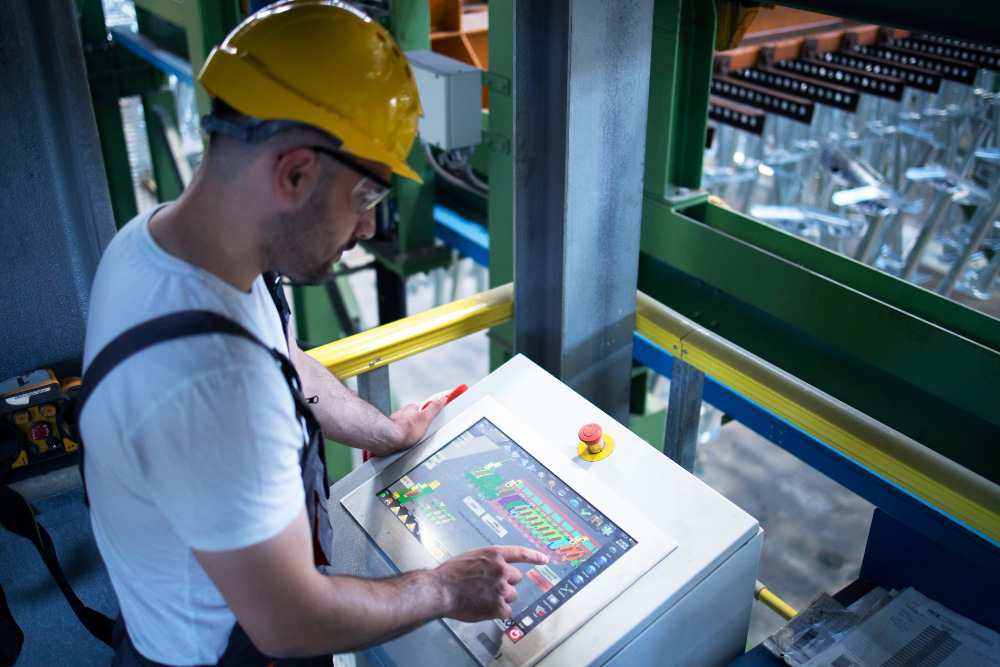Why Modern Manufacturers Are Switching to End-to-End Turnkey Handling Systems

In today’s fast-paced manufacturing world, speed, precision, and flexibility are everything. Factories no longer have the luxury of managing multiple vendors, coordinating separate systems, and troubleshooting compatibility issues. Instead, they’re embracing end-to-end turnkey material handling systems—a smarter, more connected approach to industrial efficiency.
Turnkey solutions are transforming how products move from one stage of production to another. By combining design, engineering, automation, and maintenance under one umbrella, these systems create a single, seamless workflow. Manufacturers across industries—from automotive and electronics to food processing—are discovering that when everything works together, productivity soars and downtime disappears.
Why Material Handling Is the Backbone of Every Industrial Operation
The Hidden Costs of Inefficient Workflows
Behind every product that rolls off an assembly line lies a series of carefully coordinated steps. But when those steps rely on disconnected systems, things go wrong—fast. Bottlenecks, labor shortages, and machine errors can delay production and increase costs. Inefficient material handling often leads to wasted time and inconsistent output, hurting overall profitability.
Common Challenges in Warehouse and Production Environments
Many manufacturers still rely on outdated or fragmented equipment that can’t keep up with modern demands. Forklifts may clash with conveyor systems, while software struggles to communicate across platforms. These mismatched tools cause slowdowns, miscommunication, and unnecessary safety risks for workers.
How Turnkey Solutions Simplify Complex Operations
Turnkey handling systems solve this by integrating every part of the material flow—from product intake and storage to sorting, packaging, and dispatch—into one cohesive structure. Instead of juggling multiple suppliers, manufacturers work with a single source that handles everything from system design to installation and training.
Understanding What a Turnkey Material Handling Solution Really Means
From Concept to Commissioning — What “Turnkey” Actually Covers
The term “turnkey” means the client can literally “turn the key” and start operations immediately. A turnkey system includes concept design, engineering, equipment sourcing, automation programming, installation, testing, and after-sales support. It’s a complete solution built for efficiency and reliability.
The Role of System Integration and Custom Engineering
What makes turnkey systems special is integration. Every machine, sensor, and control panel communicates through one central network. Custom engineering ensures that conveyors, lifts, robots, and sorting lines all work together, eliminating errors caused by manual handoffs or incompatible technologies.
The Value of a Single-Source Provider
With a single provider managing the project, accountability becomes clear. There’s no finger-pointing between vendors or confusion about warranties. This streamlined communication means faster response times, easier maintenance, and a smoother production process.
Problems Companies Face With Traditional Handling Systems
Fragmented Equipment Vendors and Poor Communication
When multiple vendors are involved, no one takes full responsibility for how the system works as a whole. Each supplier focuses on their component, leaving integration gaps that cost time and money. These fragmented setups often require in-house engineers to “patch” issues that should never have existed.
Downtime and Compatibility Issues Between Systems
Unplanned downtime is every manufacturer’s nightmare. In traditional setups, a simple software update on one device might break communication with others. Without proper system compatibility, maintenance becomes reactive instead of preventive, leading to production halts and missed deadlines.
Escalating Maintenance Costs and Operational Delays
Operating several disconnected systems means managing multiple service contracts, spare parts, and technicians. Not only does this complicate maintenance, but it also drives up long-term costs. Turnkey solutions simplify this with standardized components and centralized service plans.
How Turnkey Solutions Deliver Real Efficiency
End-to-End Design and Implementation Under One Roof
One of the biggest advantages of a turnkey handling system is holistic design. The same team plans, builds, and installs the entire solution. That ensures every piece of equipment is sized, aligned, and optimized for your exact workflow. This single-source design approach minimizes installation errors and reduces time-to-production.
Automation, Robotics, and Smart Control Integration
Modern turnkey systems use robotics and automation to handle repetitive or heavy tasks. Automated guided vehicles (AGVs), robotic palletizers, and conveyor-based sorting systems reduce the need for manual labor while increasing throughput. Smart control panels powered by PLC (Programmable Logic Controller) systems allow operators to monitor every process in real time.
Data-Driven Optimization for Long-Term Performance
The digital layer is what makes turnkey systems future-ready. IoT (Internet of Things) sensors collect data on speed, temperature, vibration, and load weight. Managers can use this data to predict maintenance needs and fine-tune performance before problems occur. It’s a shift from reactive to proactive manufacturing.
Choosing the Right Turnkey Provider for Your Operation
Matching System Capabilities to Production Goals
Not all systems are built the same. Before committing, manufacturers should clearly define their goals—whether it’s reducing labor costs, increasing throughput, or improving quality control. The right provider will design a system around those targets, not just install generic equipment.
Evaluating Experience, Engineering Expertise, and Support
When selecting a turnkey partner, experience matters. Look for providers with a proven track record in your industry and in-house engineering expertise. They should offer 3D modeling, simulation testing, and commissioning support to ensure a smooth transition from design to production.
Ensuring Scalability and Future-Ready Infrastructure
A great turnkey system isn’t just built for today—it’s built for tomorrow. Modular equipment layouts and open software architecture make it easy to add new machines or technologies later. This scalability ensures your system grows with your business, not against it.
The Future of Material Handling: Where Turnkey Systems Are Headed
The Rise of AI, IoT, and Predictive Maintenance
Tomorrow’s factories are smart, self-learning environments. Artificial Intelligence (AI) analyzes operational data to forecast failures and suggest efficiency improvements. Predictive maintenance reduces unplanned downtime and keeps machines running at peak efficiency.
Sustainability and Energy Efficiency in Facility Design
Sustainability is now a top priority for manufacturers. Turnkey systems use energy-efficient motors, regenerative drives, and low-power LED lighting to reduce consumption. These features not only lower operating costs but also help companies meet green compliance standards.
How Digital Twins and Real-Time Analytics Are Reshaping Operations
A digital twin is a virtual replica of your physical system. It allows managers to simulate new workflows, test production speeds, and visualize bottlenecks before making real changes. Combined with real-time analytics, digital twins help businesses make data-driven decisions that boost overall performance.
Conclusion
Modern manufacturers are no longer asking if they should switch to turnkey systems—they’re asking how fast they can. By unifying design, automation, and data analytics, end-to-end turnkey material handling solutions deliver speed, precision, and long-term cost savings.
The power of turnkey isn’t just in the machinery—it’s in the strategy behind it. When everything works together under one system, manufacturers gain full control, predictability, and confidence in their operations. In a world where efficiency defines success, turnkey solutions aren’t just an upgrade—they’re the new industry standard.



